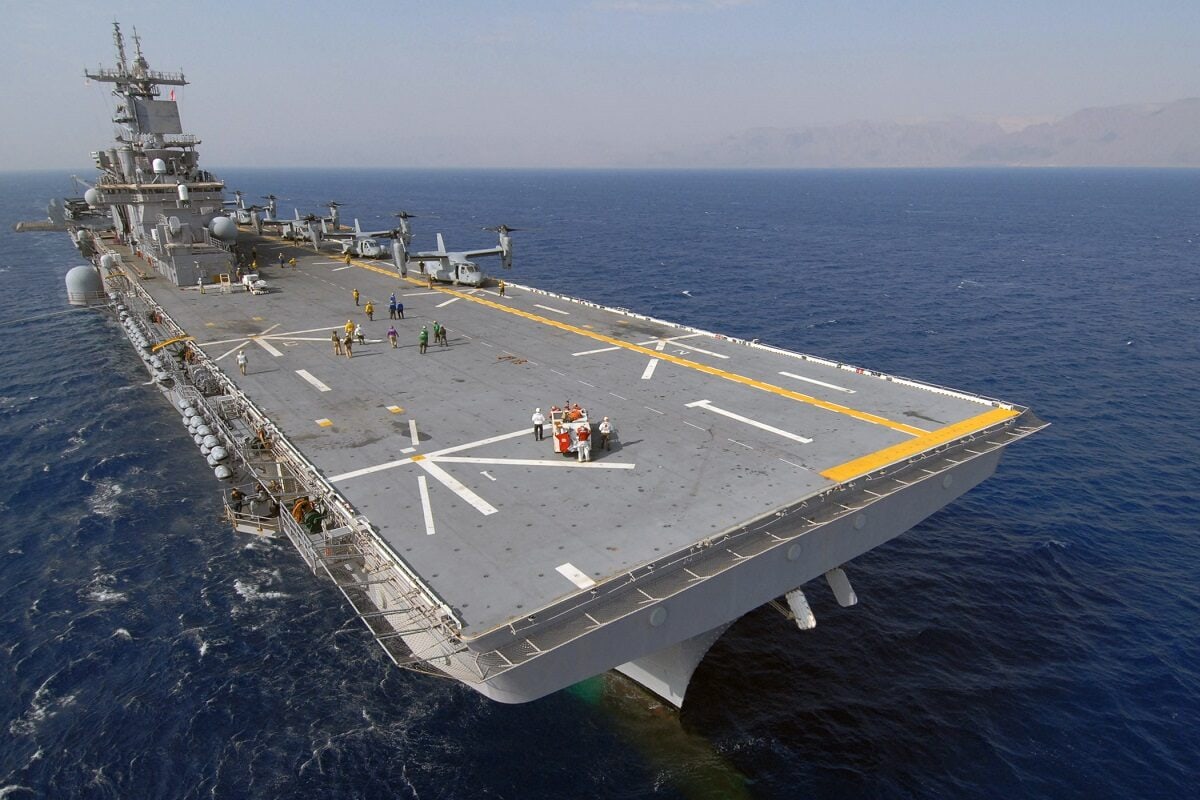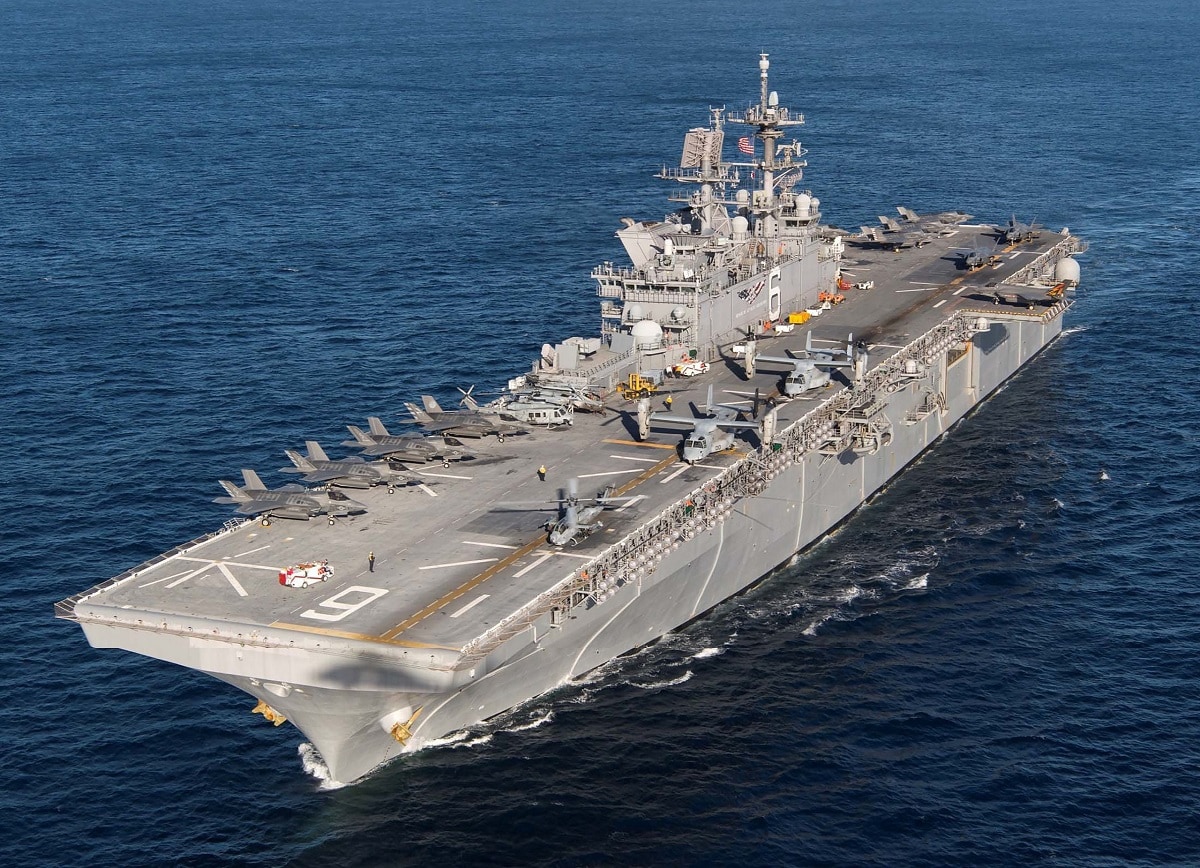The People’s Liberation Army Navy (PLAN) has undertaken an ambitious modernization and expansion program that has included the construction of several aircraft carriers. In short order, China went from a nation that barely had a “green water” navy to one that now has two operational aircraft carriers – albeit one that is actually a Cold War Soviet-era refurbished warship – with a third under construction and a fourth in the early stages of development. It is that latter carrier that has been in the spotlight as reports suggest it could be nuclear-powered and potentially on a scale similar to the U.S. Navy’s supercarriers.
However, China’s flattop ambitions don’t end with true carriers. The PLAN is already bulking up its fleet of amphibious vessels – and that includes the Yuzhao-class Type 071 amphibious transport dock ships and the Yushen-class Type 075 amphibious assault ship. China currently has six of the former ships in service with two more under construction, and eight planned of the latter warships – with one in operation and two more now being built.
The Type 075 are smaller in size than the U.S. Navy’s Wasp-class or America-class amphibious assault ships, but at 237 meters in length and displacing upwards of 40,000 tonnes, the PLAN warships are still among the largest of their type in the world. These ships can carry a large number of landing craft, troops, armored vehicles, and helicopters – while serving as a command and control vessel during an assault.
“The Type 075 features a full-length flight deck for helicopter operations, which in time could also serve as a platform for short-takeoff and vertical-landing aircraft, should China develop a reliable airframe for that environment,” said a Pentagon report on the state of the PLAN, authored by analysts Matthew Funaiole and Joseph Bermudez, according to National Defense.
The report also noted that the vessels feature a floodable well deck situated at the stern, which can allow hovercraft and other vehicles to disembark. The ships can carry upwards of 900 troops.
Both the Type 071 and Type 075 vessels could provide the PLAN greater capacity, endurance, and flexibility for long-range operations relative to legacy landing ships, which China has reduced in number over the last decade as it removed obsolete units from service, National Defense added.
China’s amphibious fleet is currently transitioning from what is little more than a World War II or early Cold War-era fleet, including one that could be far more diverse and on par with what the United States operated during the latter stages of the Cold War.
According to the Pentagon report, the PLAN’s “expanding fleet of large modern amphibious warships will enable it to conduct a wide range of expeditionary operations wherever PRC interests are threatened or in support of PRC participation in UN-sanctioned peacekeeping operations. The expansion of naval operations beyond China’s immediate region will also facilitate its non-war military activities and further legitimize the PRC’s growing global military posture, including its base in Djibouti.”
The overseas bases are of course the piece of the puzzle China still lacks, and as the Pentagon report also noted – it is one thing to build a blue-water navy, and increase amphibious assault capabilities. But having the network of facilities to support it is just as important, and so too is the knowledge to operate in different environments around the globe.

071004-N-1189B-012
GULF OF AQABA (Oct. 4, 2007) – U.S. Marine Corps MV-22 Ospreys, assigned to Marine Medium Tiltrotor Squadron (VMM) 263, Marine Aircraft Group 29, prepare for flight on the deck of the multipurpose amphibious assault ship USS Wasp (LHD 1). Wasp is on surge deployment to the Middle East carrying the Osprey to its first combat deployment. U.S. Navy photo by Mass Communication Specialist 2nd Class Zachary L. Borden (RELEASED)
China can play catch up by building the fleet, but the knowledge is something that can’t be rushed.
Peter Suciu is a Michigan-based writer who has contributed to more than four dozen magazines, newspapers and websites. He regularly writes about military small arms, and is the author of several books on military headgear including A Gallery of Military Headdress, which is available on Amazon.com.

